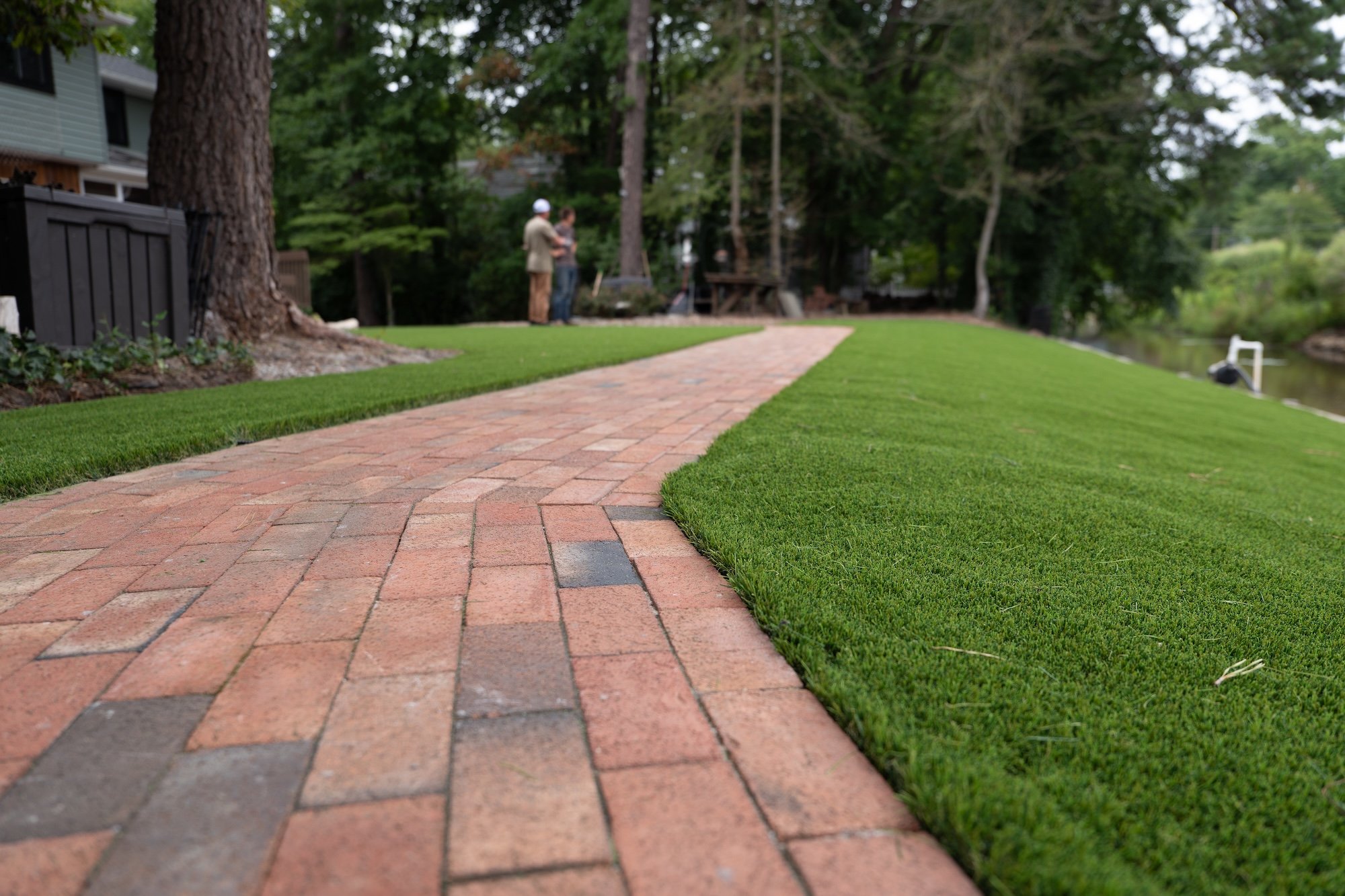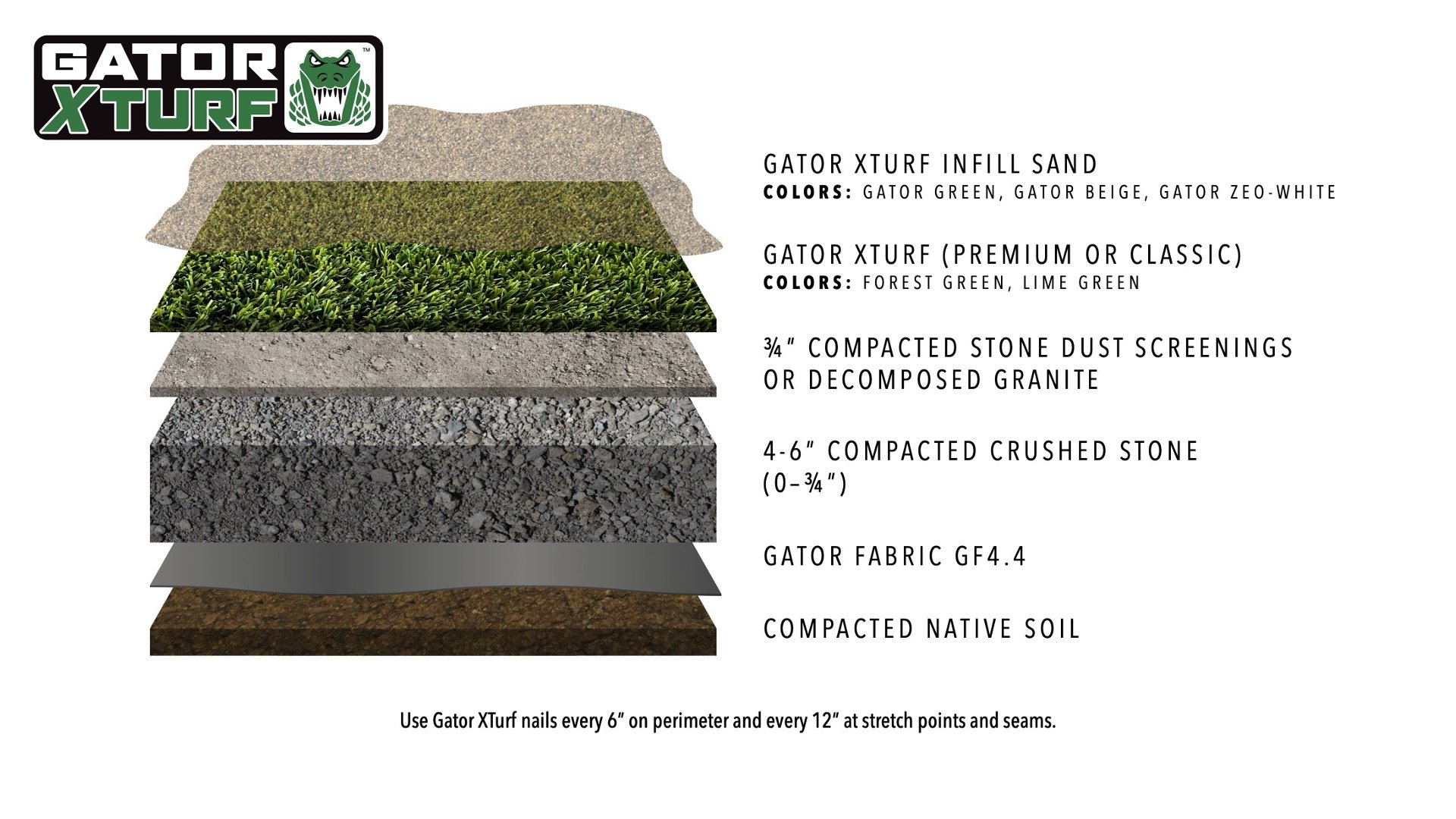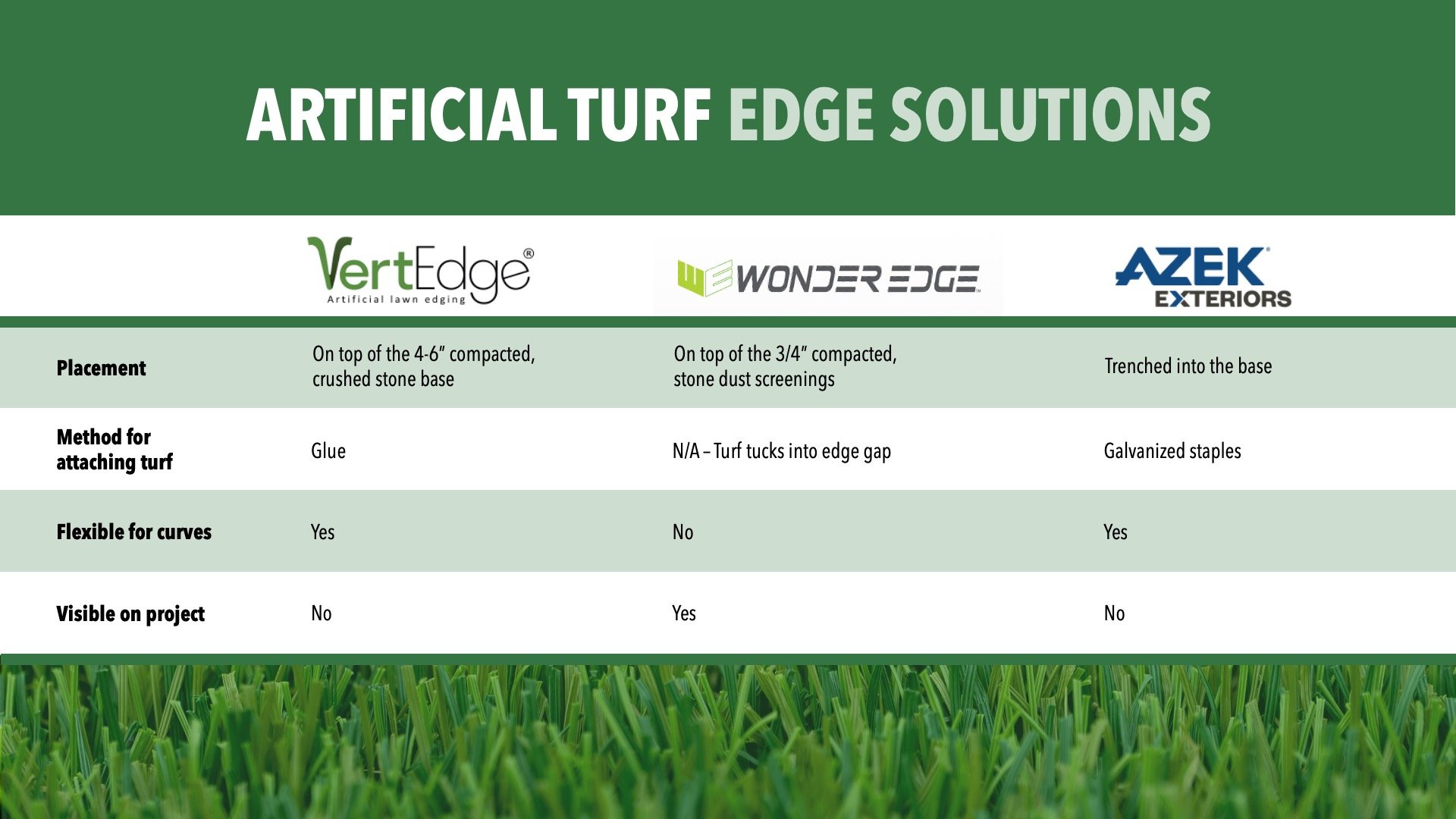3 Edging Solutions For Artificial Grass
When artificial grass butts up to existing pavers or concrete, the foundation of a house, or a Belgian block curb, the use of an edge restraint won’t be necessary. However, what happens when there isn’t an adjoining hard surface to serve as a boundary? In this post, we’ll explain three common types of edge restraint to use with artificial grass and the pros and cons of each.
The Purpose of Edge Restraint
Just like with pavers, using an edge restraint with artificial turf can help secure and extend the life of a project. The edging will prevent the artificial turf from being pulled up, as well as help the outside perimeter from becoming frayed or damaged, and generally result in a more aesthetically pleasing project.
There are several options for edging on the market, and some of the more expensive options aren’t necessarily the best. Let’s take a look at three popular products and break them down.
VertEdge
VertEdge is a plastic edge solution that looks similar to the plastic edging used for pavers. It gets installed directly on top of the crushed stone base. Then a layer of compacted stone dust screenings is installed right up to the top lip of the VertEdge. The cross section below depicts what the base of an artificial turf project should look like.
As shown, similar to pavers, 4-6” of crushed stone should be used for the foundation. A ¾” layer of compacted stone dust is then installed to serve as a high capacity bearing surface for the artificial turf. Again, the VertEdge is placed above the compacted crushed stone and below the compacted stone dust. The artificial turf should extend slightly over the VertEdge and be adhered with glue, such as Gator XP Glue. Because the extended, outer edge of the artificial turf is curved downwards, it stays tucked in and protected from getting kicked or pulled up. The artificial turf can then seamlessly flow into a mulch bed, sidewalk, or pathway.
Aside from being easy to install, the VertEdge can be snipped on the backside, allowing it to bend for curved applications.
Wonder Edge
Wonder Edge, like VertEdge, is similar to plastic hardscape edging. However, where the VertEdge is meant to be hidden underneath the artificial turf, the Wonder Edge is designed to be exposed. It comes in two versions, Regular and Low Profile (the Low Profile option is ADA Compliant). Connectors are also available for Wonder Edge so pieces can be easily joined together.
Wonder Edge gets spiked in on top of the ¾” layer of compacted stone dust. The edge of the turf then gets tucked into the gap on the edging. (Note: It’s slightly more challenging to tuck the artificial turf into the Low Profile version.) Overall, the Wonder Edge provides a nicely defined line for a pathway or a clean and obvious transition to the adjoining area.
Because Wonder Edge is made from a stiff material, it doesn’t bend easily and is therefore not an ideal solution for curved applications. Also, since it’s meant to be exposed, there’s more risk of it becoming brittle from UV exposure or damaged by a weed wacker or other power yard tools.
Ledger Board
Using a ledger board or strip will offer the most natural look to an artificial turf project because it gets buried directly into the base. There are many different types of material that can be used for a ledge board, from pressure treated lumber to composite materials, like AZEC. Board sizes can vary from 1’x4’, 2’x4’, and up to 4’x4.’
The ledger board gets installed along the edge of the artificial turf, into the base itself. It should be set at the same height as the stone dust layer. (Pro Tip: The ledger board can be multipurposed to help screed off the base.)
Installing the ledger board requires a bit more work because it gets trenched into the base, rather than simply nailed or stapled on top of it. Another consideration for this style of edging is that pressure treated lumber cannot be bent. AZEC or Benda Board are good choices for curved applications since they’re more flexible and, because they’re made from composite material, they won’t rot into the ground.
Galvanized staples should be used to adhere the artificial turf to the ledger board. It’s important to wiggle a narrow crown stapler into the blades of grass and find spaces in between the stitch gauge. Stapling over the grass blades will create obvious visual imperfections in the project.
A side note on galvanized vs. non-galvanized Nails:
Non-galvanized spikes should be used for securing the overall artificial turf project. This is because they rust into the earth, expand in size, and become very resistant to being pulled out. We recommend galvanized staples for securing the artificial turf to the ledger board for three reasons: 1. They easily fit between the rows of grass blades without crushing them; 2. They’re very difficult to pull out of the board; 3. They’ll last a long time.
And the winner is …
While each project has its own set of unique characteristics and considerations to keep in mind, our overall vote on artificial turf edging is a ledge board made of composite material. It offers the most flexibility (at reasonable cost) and the best overall performance.
If you’re interested in adding Gator X-Turf artificial turf to your existing offering of products/services, request a free sample box today.*






